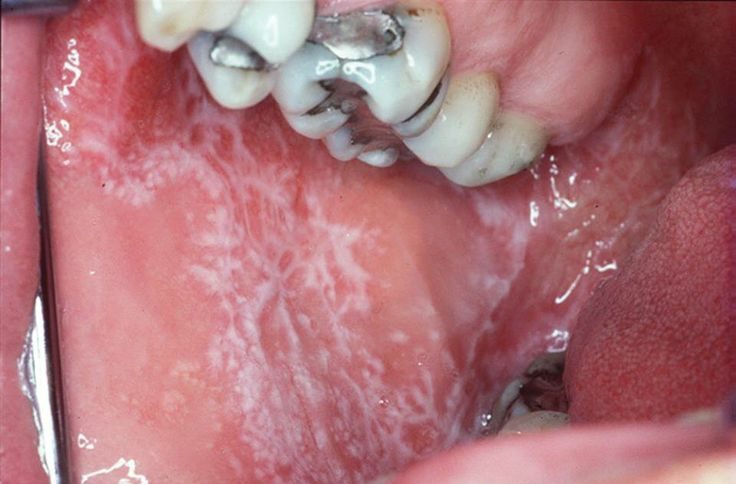Oral lichenoid lesions (OLL) or lichen-planus-like lesions are often idiopathic (arising spontaneously or from an obscure or unknown cause). Oral lichen planus (OLP) is a chronic inflammatory disease that causes bilateral white striations, papules, or plaques on the buccal mucosa, tongue, and gingivae. Lichen planus is a common disorder of unknown aetiology.
Oral lichen planus (OLP) may present in one of three forms.
The reticular form is the most common presentation and manifests as white lacy streaks on the mucosa (known as Wickham's striae) or as smaller papules (small raised area). The lesions tend to be bilateral and are asymptomatic. The lacy streaks may also be seen on other parts of the mouth, including the gingiva (gums), the tongue, palate and lips.
The bullous form presents as fluid-filled vesicles which project from the surface.
The erosive form presents with erythematous (red) areas that are ulcerated and uncomfortable. The erosion of the thin epithelium may occur in multiple areas of the mouth, or in one area, such as the gums, where they resemble desquamative gingivitis. Wickham's striae may also be seen near these ulcerated areas. This form may undergo malignant transformation.
Oral Lichen Planus Typical Features
- Females account for 65% of patients
- Patients usually over 40 years
- Untreated disease persists for 10 or more years
- Lesions in combination or isolation comprise Striae,Atropic areas and Erosion Plaques
- Common Sites are buccal mucosa,Dorsum of tongue and Gingiva
- Lesions usually occur bilaterally and symmetrically
- Cutaneous lesion only occassionally associates .
- Usually good response to corticosteroids




Comment: Video: Smoking Teeth = Poison Gas (Mercury)